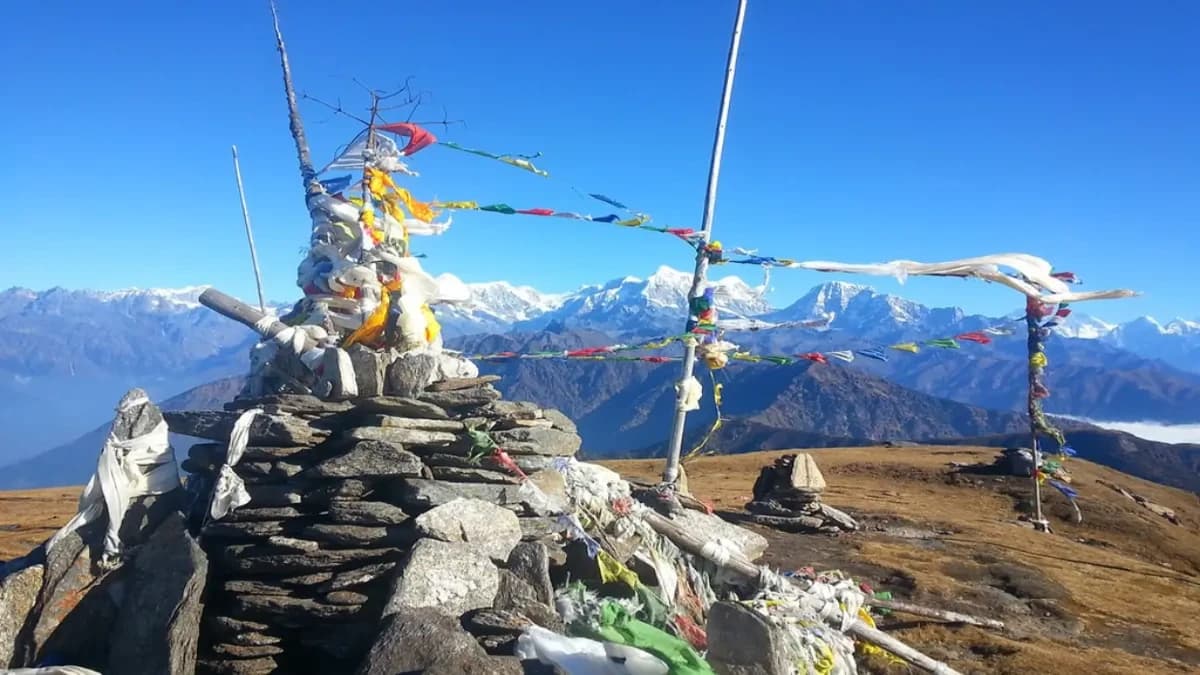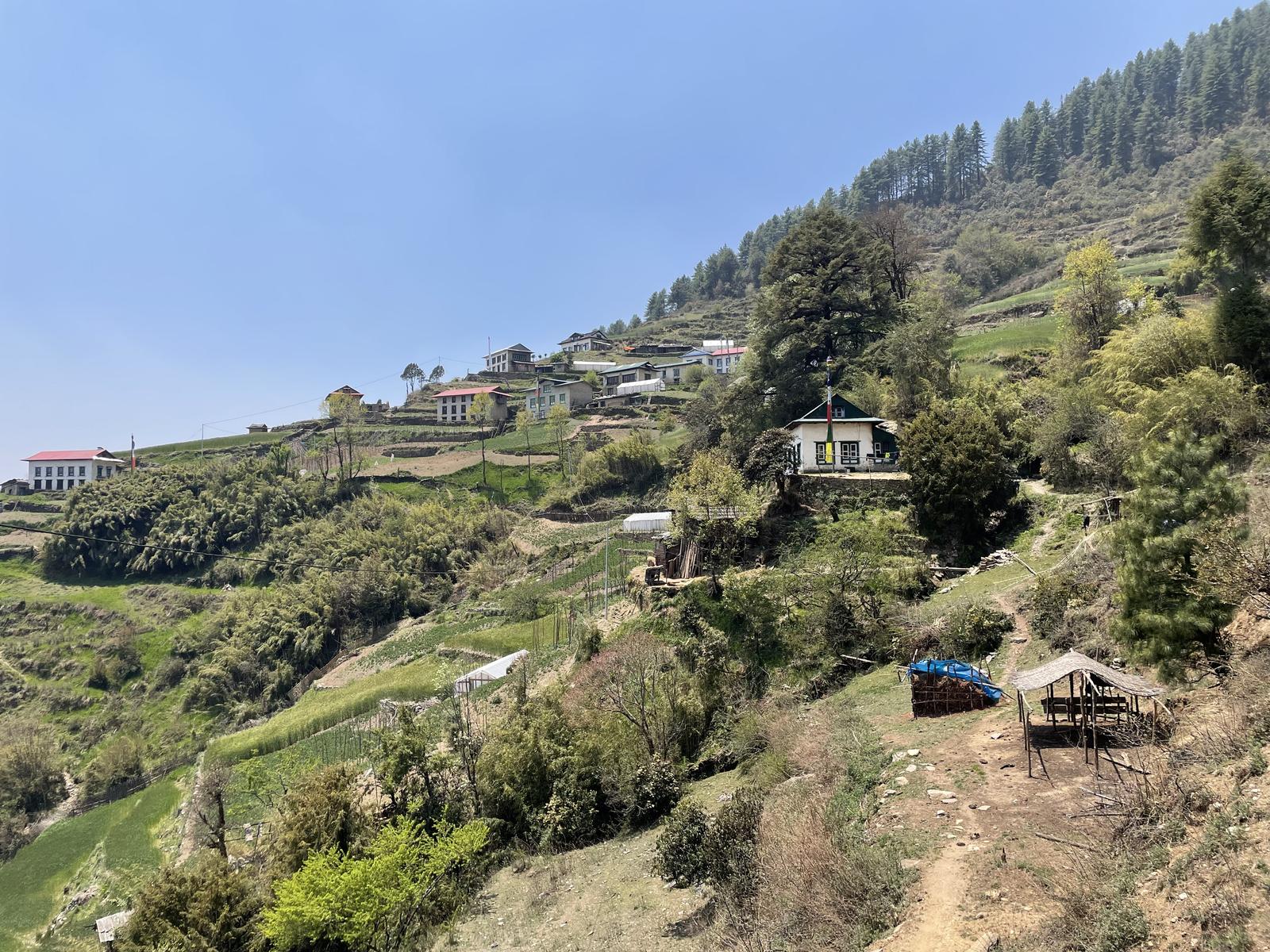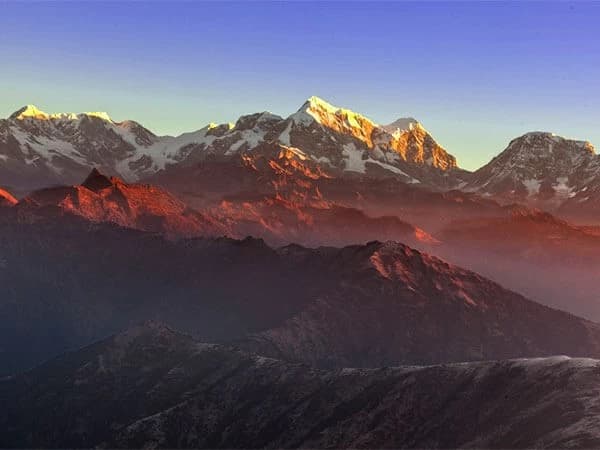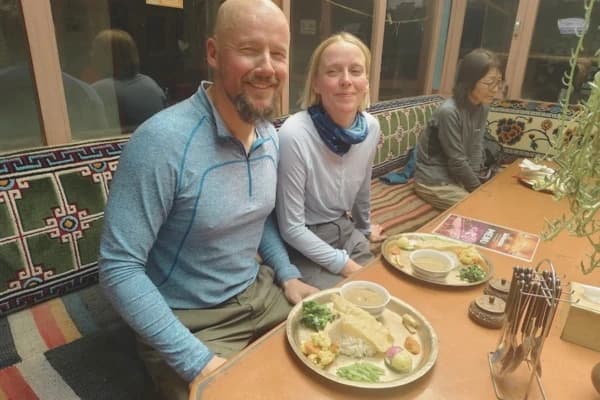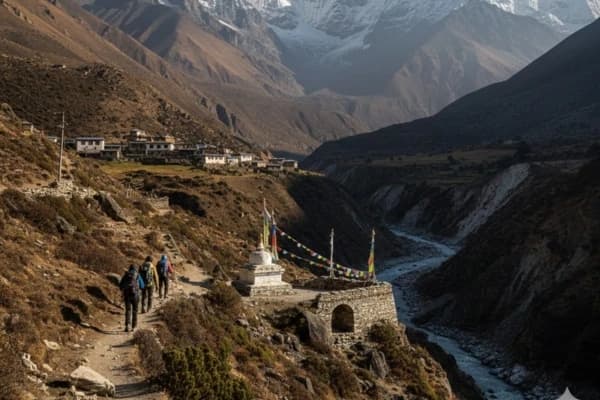The Pikey Peak Trek is a quiet trail in Nepal’s Lower Everest Region, known for incredible mountain views and peaceful villages. The Pikey Peak Trek Map shows the whole Pikey Peak trek route, elevation changes, and top spots to enjoy the scenery. Using a reliable Pikey Peak trekking map helps you stay safe and accurately determine the Pikey Peak trek distance.
The trail isn’t just one path—there are multiple access points, side trails, and cultural detours. Without a map, getting lost in forests and Sherpa villages is easy, which can be risky.
Our proper Pikey Peak trail map shows the exact route from Dhap or Jiri to the summit and back to Phaplu or Salleri. It also marks daily distances and important rest stops like Jhapre, Loding, and Junbesi.
Detailed Pikey Peak Trek Map and Route
The Pikey Peak trek is one of Nepal’s most beautiful and easy-to-manage short hikes. The trail usually starts after departing from Kathmandu and going to Dhap by transport.
The trekking route takes us through villages like Jhapre and Bulbule, and then we arrive at the Pikey Peak base camp, where we begin our climb to the Pikey Peak summit at 4065 m altitude.
After the ascent comes the descent; we trek down to Jase Bhanjyang and Junbesi. To end our trekking journey, we head to Phaplu, where we will be flying back to Kathmandu.

The whole Pikey Peak trip is around 80 km, give or take, depending on the routes you take, making this a good route for 9 to 11 days hike.
Key waypoints
- Dhap (1830m): starting point, drive by road from Kathmandu
- Jhapre (2340m): known for incredible views and local Sherpa culture
- Bulbule (3320m): a quiet and nature-abundant walk
- Pikey Base Camp (3250m): the last stop before the final climb to the summit
- Pikey Peak Summit (4065m): the best place to catch the sunrise over Everest
- Junbesi (2675m): a Sherpa village with a monastery
- Jase Bhanjyang (3550m): a peaceful mountain pass known for expansive Himalayan views
- Thupten Choling Gompa (2920m): the peaceful Thupten Choling monastery
- Phaplu (2460m): end of the journey, and fly back to Kathmandu
Some hikers choose the longer Jiri route for a more diverse cultural experience, which takes a bit more time than the usual route. A good Pikey Peak trek map will clearly show both options.
How to read the map: Look for icons that show altitude, camping spots, villages, forest areas, and side trips. It’s best to keep both a downloadable Pikey Peak map on your phone and a paper copy as backup. Nepal Gateway Trekking will help you with the map.
Pikey Peak Trek Itinerary | 11 Days Short Itinerary
Here's a sample 11-day itinerary to help you plan:
- Day 01: Arrival in Kathmandu (1,310m)
Land in Kathmandu and take a 20-minute drive to your hotel to rest and settle in. - Day 02: Drive to Dhap Bazaar (2,850m)
Start your day early in the morning for a 7-hour jeep ride to Dhap, the starting point of the trek. - Day 03: Trek to Jhapre (2,815m)
Begin your hike with a 5-hour walk to the quiet village of Jhapre, known for mountain views and Sherpa culture. - Day 04: Trek to Bulbule (3,320m)
A shorter day with just 3 hours of walking through forested trails to reach Bulbule. - Day 05: Trek to Pikey Peak Base Camp (3,640m)
Trek for about 5 hours to reach the base camp, surrounded by fantastic scenery and fresh mountain air. - Day 06: Summit Pikey Peak (4,067m) and trek to Loding or Jase Bhanjyang
Wake up early for the sunrise hike to the summit, then walk another 4–5 hours to reach Lodging or Jase Bhanjyang. - Day 07: Trek to Junbesi (2,680m)
Trek for around 5 hours down through forested paths to reach the beautiful Sherpa village of Junbesi. - Day 08: Explore Thupten Choling Gompa (2,920m)
Spend the day visiting the peaceful Thupten Choling Monastery with a 4-hour round-trip walk. - Day 09: Trek to Phaplu (2,380m)
Walk for about 5 hours to reach Phaplu, the end point of your trek. - Day 10: Fly back to Kathmandu (1,310m)
Take a 20-minute flight to Kathmandu and a short drive back to your hotel. - Day 11: International Departure
Head to the airport for your flight home with memories of the mountains.
For the full itinerary, explore our Pikey Peak Trek Package.
Scenic Highlights and Cultural Experiences in Pikey Peak
Pikey Peak is famous for its incredible Himalayan views. On a clear morning, from the summit at 4065 m, you can see some of the tallest and most famous mountains in the world, including Mount Everest, Makalu, Lhotse, Manaslu, Annapurna, and even Kanchenjunga. This panoramic view is truly unforgettable and the biggest reward for the climb.
Along the way, there are several key viewpoints worth stopping at:
- Jhapre (2340 m): This village offers beautiful mountain views and a chance to experience authentic Sherpa culture. The landscape here is scattered with prayer flags and traditional houses, and you might even hear monks chanting from local gompas (monasteries).
- Bulbule (3,320 m): Bulbule is a short and easy stop to base camp. It’s quiet and surrounded by nature, with forest trails and fresh mountain air. In spring, the area gets covered in blooming rhododendrons, making it a colorful and peaceful place to relax before heading higher.
- Pikey Base Camp (3250 m): Just below the summit, this is a great place to prepare for the final climb. The views here are already stunning, with the Himalayas stretching all around.
- Pikey Peak Summit (4065 m): The highlight of the trek. The early sunrise here lights up the entire Himalayan range. You can see famous peaks like Everest and Annapurna bathed in golden light—a truly magical experience for any trekker.
- Jase Bhanjyang (3550m): After summiting Pikey Peak, this quiet mountain pass is the perfect place to pause and take in the views. It’s calm and open and gives you that peaceful feeling before you head down toward the villages below.
- Junbesi (2675 m): A traditional Sherpa village with a historic monastery. You can learn about local culture, visit gompas, and enjoy warm hospitality in cozy teahouses. Sometimes, you might see yak caravans passing through or catch a local festival.
Along the trail, you’ll spot Nepal’s unique wildlife and plants. Keep an eye out for rare animals like red pandas, colorful Himalayan birds, and the bright rhododendron flowers that bloom in spring.
Plan Your Pikey Peak Trek: Accommodation and Logistics
Here’s everything you need to know about where to stay, how to get there, the weather, and permits for your Pikey Peak trek.
Accommodation Options Along the Route (Teahouses, Lodges)
Along the trail, you’ll stay in basic but cozy teahouses in most villages. Rooms usually have twin beds that you share with other trekkers. You can enjoy local noodles, soups, rice, and potatoes. Some teahouses also offer charging, hot showers, and Wi-Fi for a small extra cost.
Accessibility and Transport to the Starting Point
From Kathmandu, you’ll hop on a jeep or bus to Dhap - the ride takes around 7 to 9 hours on a bumpy but scenic road. If you go for the Jiri route instead, it takes longer but offers more cultural experiences. Most people finish the trek in Phaplu and head back by jeep or take a short flight to Kathmandu.
Weather Conditions and Best Trekking Seasons
The best time for Pikey Peak trek is during spring (March to May) or autumn (September to November), when the weather is clear, the temperatures are comfortable, and the forests are full of color.
Winter can be chilly but quiet, while the monsoon season from June to August brings heavy rain, slippery trails, and leeches—so it’s not the best time to go.
Trekking Permits and Regulations (TIMS, National Park)
Since Pikey Peak is in the Solukhumbu region, you’ll need a TIMS card to trek. You’ll also need the Gaurishankar Conservation Area Permit if you're taking the Jiri route. It’s a good idea to always keep copies of your permits and passport with you during the trek.
Summing Up
A Pikey Peak trek map isn’t just something nice to have - it’s what keeps your trek smooth, safe, and full of adventure. It shows you where to go and where to stop and helps you make the most of those amazing viewpoints.
Before you leave, make sure to grab your Pikey Peak trek map, whether it’s on your phone or printed out. Keep it handy and check it often along the way.
For more trekking tips and trail maps, contact Nepal Gateway Trekking’s expert guides and plan your next big Himalayan journey!
Pikey Peak Trek Map FAQs
What’s the best type of map for the Pikey Peak trek?
A printed map is excellent to carry for safety, but it’s also smart to have a downloadable Pikey Peak map on your phone with GPS support.
How long does the trek take?
It usually takes between 5 and 11 days, depending on your pace and which route you choose.
Is the Pikey Peak trek okay for beginners?
Yes! It’s a moderate trek with manageable height and good teahouse support.
What permits do I need?
You’ll need a TIMS card. If you’re trekking through Jiri, you’ll also need a Gaurishankar Conservation Area Permit.
Where can I get a free Pikey Peak trek map?
You can find updated maps online through Nepal Gateway Trekking and trusted trekking blogs—just make sure they show the whole route and key waypoints.
Why do I need a map for the Pikey Peak Trek?
A map helps you follow the trail confidently, especially since the Pikey Peak route passes through remote villages with fewer signboards. It also helps in planning stops, tracking altitude, and estimating walking hours each day.
Can I do the Pikey Peak Trek without a guide if I have a map?
Yes, many people trek this route independently. With a detailed map or a trusted offline GPS app, it’s safe and manageable for beginners.
Is Pikey Peak trek connected to Everest Base Camp?
No, but it’s nearby. Some trekkers combine Pikey Peak with other lower Solukhumbu routes that connect to Salleri or Jiri, gateways to Everest Base Camp.
